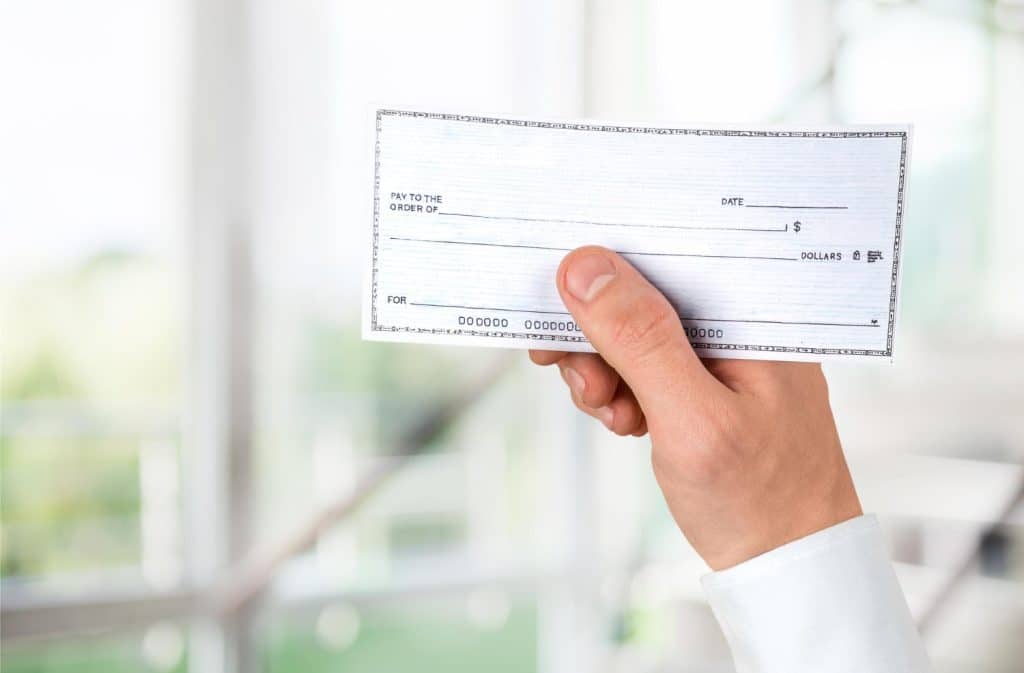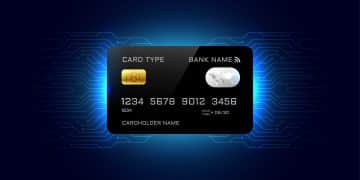How to fill out a check? Check all the steps and clear your doubts

Anúncios
Checks still play an important role in certain transactions. Some people or companies prefer this more traditional method, especially in high-value transactions or to ensure more physical and tangible financial control.
Thus, filling out a check may seem like a simple task, but it requires attention to detail to avoid problems such as fraud, bank refusals, or even errors that render the check unusable.
So, if you want to know more about how to fill out a check, keep reading to understand all the steps!
What is important when filling out a check?
Before diving into the step-by-step process of filling out a check correctly, it’s essential to understand some important points that must be observed every time you issue a check.
When followed correctly, these details ensure the validity of the check and help avoid problems such as fraud or rejection by the bank. Check it out!
Always include the payee and amount
One of the most important aspects when filling out a check is to ensure that the payee is correctly indicated and that the amount is written clearly and accurately.
The field designated for the payee, usually identified as “Pay to the Order of,” should contain the name of the person or company receiving the payment.
Thus, it is essential to fill out this field without unnecessary abbreviations or mistakes. Any errors could result in the check being refused or causing issues for the payee when trying to cash it.
Additionally, the amount of the check must be written in two ways: in numbers and in words. This is a security measure to prevent fraud or alterations.
If there is any discrepancy between the amounts, the bank will consider the written amount as the correct one. Therefore, it is important to be clear and precise in both the numerical and written fields.
Fill in as many spaces as possible
An extra precaution when filling out a check is to avoid leaving blank spaces, especially in the fields for the amount and the payee’s name.
When there are blank spaces, there is a possibility that someone could insert additional information, which could facilitate fraud.
Therefore, when writing the payee’s name, fill out the line completely. Similarly, when indicating the amount, write as close to the edge as possible to prevent additions.
Use a good pen
The use of an appropriate pen is also crucial. It is always recommended to use a black or blue ink pen, which are the colors accepted by most banks.
Never use a pencil, as it can be easily erased, or pens in other colors that may not be legible or seem inappropriate for a financial document.
Thus, a good pen, preferably with permanent ink, ensures that the check is clear and legible, and makes it more difficult for anyone to try to alter it.
How to fill out a check without errors?
Now that you understand the essential elements that must be observed when filling out a check.
Let’s go over the detailed step-by-step process for filling out each field correctly, avoiding errors and ensuring that your check will be accepted by both the bank and the payee.
Fill in the date and payee
The first thing you should do when filling out a check is to indicate the date it was issued.
This field is usually located in the upper right corner of the check.
The date is extremely important, as it indicates when the check was made and may impact when it can be cashed or processed.
In some situations, you may need to put a future date to delay the payment. This is known as post-dating a check.
However, it’s important to know that not all banks or payees accept this practice, so always check before making this choice.
The “Pay to the Order of” field should contain the full name of the person or company you want to pay.
Be careful to write the name correctly and without unnecessary abbreviations. A common mistake when filling out checks is to abbreviate or omit important parts of the payee’s name, which can lead to the check being refused when it is cashed.
Thus, an important tip is to fill out the line completely, avoiding leaving blank spaces that could be used to add other information and facilitate fraud. The more complete the filling, the more secure the check will be.
Write the amount of the check – numeric and written out
Next to the payee’s name field, there is a space for the check’s amount in numbers.
This field is usually aligned to the right and should be filled out clearly and accurately. For example, if you are issuing a check for $150.75, you should write “150.75”.
Always include the cents, even if the amount is rounded, like “150.00”, to ensure that the check cannot be altered.
Below the numerical field, there is a line where you must write the amount of the check in words.
This is a security measure adopted by banks to confirm the exact value of the check. In case of discrepancies between the numeric amount and the written amount, the bank will consider the written amount as correct.
For example, for the amount of $150.75, you should write “One hundred fifty dollars and 75/100”.
The use of the fraction (75/100) represents the cents. If the amount were $150.00, it would be written as “One hundred fifty dollars and 00/100”.
Write the memo
The “Memo” field is an additional space where you can note the reason for your payment.
It is optional, but it can be useful for keeping a personal record for people who track their finances at the end of the month, or to indicate to the payee the reason for the payment.
For example, you can write “Rent payment” or “Services rendered.” This does not impact the validity of the check, but it can help both parties understand the transaction in the future.
Sign the check
Finally, the check requires you to sign your name in the bottom right corner of the check.
Without the signature, the check will be considered invalid and cannot be cashed at the chosen bank.
Your signature must match the one on file with the bank to avoid any issues with fraud.
Therefore, if you signed your name differently when you opened the account, the bank may refuse the check due to inconsistency.
How to void a check in case of errors?
Now you know how to fill out a check. But mistakes happen, and if you make an error when filling out a check, the safest course of action is to void it.
To void a check, simply write the word “VOID” in large, legible letters across the check, covering both the amount and the payee’s name.
Writing the word “VOID” invalidates your check, ensuring that it cannot be cashed or altered by someone else.
After voiding the check, you can either discard it or keep it for personal records. If you decide to keep it, store it in a safe place, out of reach of others.
What is the correct way to fix an error on a check?
In some cases, the error made when filling out a check can be corrected without the need to void it.
However, this should only be done in situations where the error is minor, such as a typo in the “Memo” field or in the written amount.
To correct it, simply cross out the error lightly and write the correct information next to it, on the same check.
Remember that the cross-out should be done clearly, without scribbling, so the bank can process the information legibly.
If the error is more significant, such as in the payee’s name or the numeric amount, the best course of action is to void the check and fill out a new one.
Did you learn how to fill out a check correctly? Now you can use this tool more safely. We hope you enjoyed the content!
Want a suggestion? Also, read our content explaining some budgeting methods that can improve your financial life!





